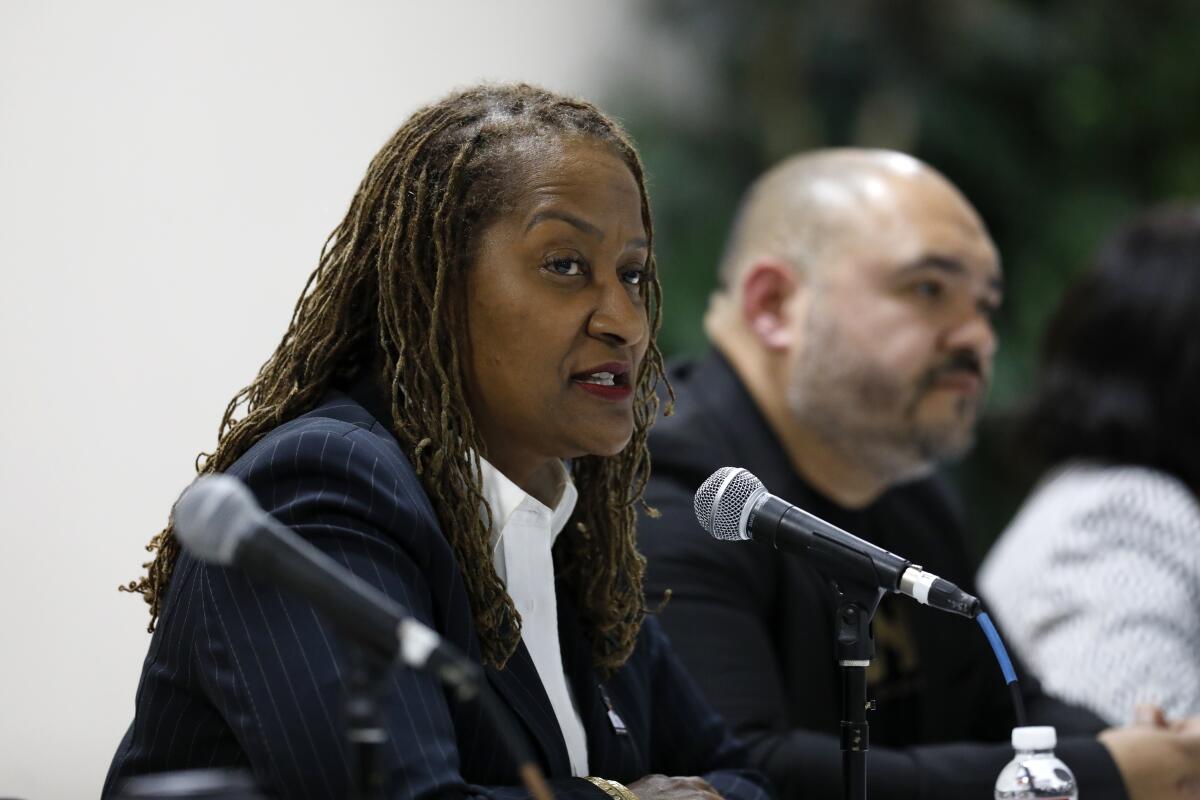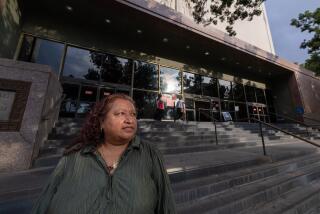Why are Black children removed from homes at high rate? L.A. County plans ‘blind removal’ pilot

America’s largest child welfare system will soon test whether race, ethnicity or neighborhood can influence social workers’ decisions to remove children from their homes.
The Los Angeles County Board of Supervisors voted Tuesday to support a pilot project that tests “blind removal,” first tried in Nassau County, N.Y.
Social workers typically have access to an array of information, including a family’s race, when making the difficult decision to place a child in foster care or with a relative.
Five years after race and related factors were eliminated from removal deliberations in Nassau County, 21% of children in foster care were Black, compared with 57% before blind removal.
After seeing those results, the New York state officials announced in October that they would implement blind removal statewide.
“For decades, Black and brown children have been substantially overrepresented in L.A. County’s child welfare system, and it’s past time for us to change that,” said Supervisor Holly Mitchell, author of Tuesday’s motion.
Seven percent of children in L.A. County are Black, while 24% of those removed from their homes from last April to this March were Black, according to the L.A. County Department of Children and Family Services.
Twenty percent of children in the county are white, with 12% of those removed.
In 2020, three quarters of children removed from their homes in L.A. County were Latino or Black, according to the motion, which did not provide population versus removal percentages for Latino children.
In L.A. County, the biggest reason that children are removed from their homes is neglect, according to the agency, followed by “other” factors including caretaker absence, relinquishment and exploitation. The third most common reason is physical abuse.
In her motion, Mitchell said that although the DCFS has a “well-meaning and diverse workforce,” any social worker could make a decision based on implicit bias, not realizing they view parents who are Black or low-income as less fit.
Other factors that could account for the disproportionate number of Black children in foster care include pervasive poverty, inequitable education and employment opportunities, and hypersurveillance of Black families, according to some experts and parents.
Mitchell pointed out the differences between L.A. and Nassau counties, including size and racial diversity.
“Yet the similarities for children in foster care are many,” she wrote.
Jessica Pryce , director of the Florida Institute for Child Welfare, published a case study on the Nassau County program and has since spoken to dozens of child advocates and leaders from across the country.
Blind removal typically kicks in at a meeting involving social workers and supervisors who collectively decide what to do about a child.
Race and related factors are redacted from files and are not a part of those deliberations.
Pryce, an assistant professor at Florida State University, said a common concern is that blind removal is too small of a solution and won’t transform the system.
“When people ask the question ‘Is it enough?’ my short answer is ‘No,’ but it’s something we can use right now as we’re building other parts of a future system,” Pryce said.
David Green, president of Service Employees International Union Local 721, which represents thousands of L.A. County DCSF workers, said he supports the idea and hopes his organization’s members can be involved in changing the system.
Because the concept has been tried only in much smaller communities, L.A. County’s pilot program could serve as an important source of data, said Green, who is a DCFS social worker.
“We’re the largest child welfare [system] in the United States,” Green said. “What better place to look at ways to address [racial disparity], respond to it and make sure we’re moving in the right direction?”
The county will work with UCLA‘s Pritzker Center for Strengthening Children and Families to pilot blind removals at one regional DCFS office.
Center director Tyrone Howard, a UCLA education professor, said the office has not yet been chosen.
Removing children from their homes causes major trauma, separating them from siblings, neighborhood and school — sometimes more trauma than the problems that led to the removal, Howard said.
But in some cases, keeping a child in a home can be a fatal mistake.
In recent years, 10-year-old Anthony Avalos, 8-year-old Gabriel Fernandez and 4-year-old Noah Cuatro were left with abusive parents and killed even after DCFS was alerted multiple times.
The pilot project aims to provide clarity on whether bias, unconscious or conscious, is a factor in some removals, he said.
“Race should not matter, but when you see the gross racial disproportionality we have in L.A. County, it causes us to ask the question, is race a variable that seems to weigh heavily on the types of decisions being made?” Howard asked. “We don’t know the answer, and that’s why we want to do the research.”
More to Read
Sign up for Essential California
The most important California stories and recommendations in your inbox every morning.
You may occasionally receive promotional content from the Los Angeles Times.











